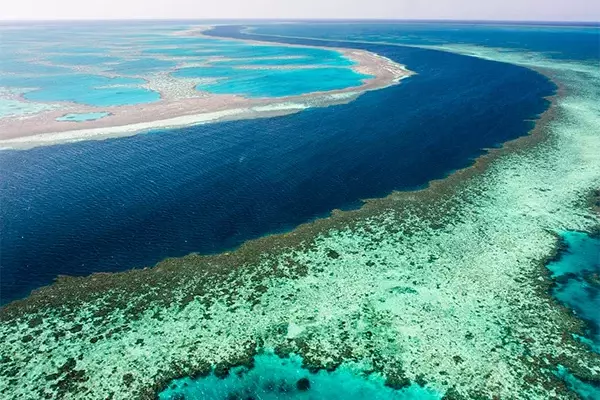Tropical coral reefs are the world’s most diverse marine ecosystems, home to thousands of animal species. Millions of people rely on healthy coral reefs for fisheries, tourism, and coastal protection. Nonetheless, coral reefs are dying at an alarming rate all over the world today.
Corals form the reef structure and serve as the foundation for a healthy coral reef ecosystem. Reefs will degrade and eventually disappear if corals are not present. At the moment, coral reefs are under multiple stresses, including pollution, overfishing, and overall climate change, which is raising seawater temperatures and causing coral bleaching around the world. As a result, over 50 percent of the world’s coral reefs have died in the last 30 years and up to 90 percent may die within the next century—very few pristine coral reefs still exist.
Since the Australian Institute of Marine Science (AIMS) began monitoring the Great Barrier Reef 36 years ago, the northern and central Great Barrier Reefs have had the most coral cover. However, due to ongoing crown-of-thorns starfish outbreaks, average coral cover in the southern region has decreased. While Reef experienced its fourth major bleaching event in seven years this year, it was not as severe as previous events and was not expected to result in mass coral mortality.
The northern and central Great Barrier Reefs now have the most coral cover recorded since the Australian Institute of Marine Science began monitoring 36 years ago. AIMS’ Annual Summary Report on Coral Reef Condition for 2021/22 has been published, revealing yet another year of increased coral cover across much of the Reef.
A third of the gain in coral cover we recorded in the south in 2020/21 was lost last year due to ongoing crown-of-thorns starfish outbreaks. This shows how vulnerable the Reef is to the continued acute and severe disturbances that are occurring more often and are longer-lasting.
Dr. Paul Hardisty
The average hard coral cover in the region north of Cooktown increased to 36% (from 27% in 2021) and to 33% in the central Great Barrier Reef (from 26% in 2021) in the 87 representative reefs surveyed between August 2021 and May 2022 under the AIMS Long-Term Monitoring Program (LTMP).
However, the average coral cover in the southern region (from Proserpine to Gladstone) fell from 38% in 2021 to 34% in 2022. The results in the north and central regions, according to AIMS CEO Dr. Paul Hardisty, showed that the Reef could still recover, but the loss of coral cover in the southern region demonstrated how dynamic the Reef was.
“A third of the gain in coral cover we recorded in the south in 2020/21 was lost last year due to ongoing crown-of-thorns starfish outbreaks,” he said. “This shows how vulnerable the Reef is to the continued acute and severe disturbances that are occurring more often and are longer-lasting.”
Dr. Hardisty said the increased frequency of mass coral bleaching events was “uncharted territory” for the Reef, with this year’s bleaching event the fourth in seven years and the first to occur during a La Niña.

“We have not seen bleaching events so close together in our 36 years of monitoring the condition of the Great Barrier Reef,” he said.
“Every summer, the Reef faces temperature stress, bleaching, and possibly mortality, and our understanding of how the ecosystem responds to this is still evolving. While the bleaching events in 2020 and 2022 were extensive, they did not reach the intensity of the events in 2016 and 2017, resulting in less mortality. These latest findings show that the Reef can still recover in the absence of severe disturbances.”
AIMS monitoring program team leader Dr. Mike Emslie said the 2022 results built on the increases in coral cover reported for 2021, with most of the increase continuing to be driven by fast-growing Acropora corals.
“These corals are especially vulnerable to wave damage, such as that caused by strong winds and tropical cyclones,” he explained. “They are also vulnerable to coral bleaching when water temperatures rise, and they are the preferred prey of crown-of-thorns starfish. This means that large increases in hard coral cover can be quickly negated by disturbances on reefs dominated by Acropora corals.”
According to Dr. Emslie, climate change is causing more frequent and longer-lasting marine heatwaves. “The most recent bleaching event peaked in March, when accumulated heat stress caused widespread bleaching but not widespread mortality,” he explained.
“The increasing frequency of rising ocean temperatures and the magnitude of mass bleaching events highlight the critical threat that climate change poses to all reefs, especially as crown-of-thorns starfish outbreaks and tropical cyclones occur.” In a short period of time, a future disturbance can reverse the observed recovery.”





